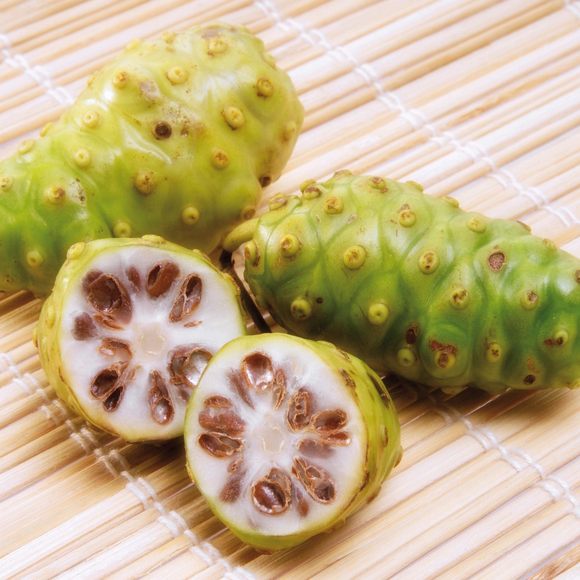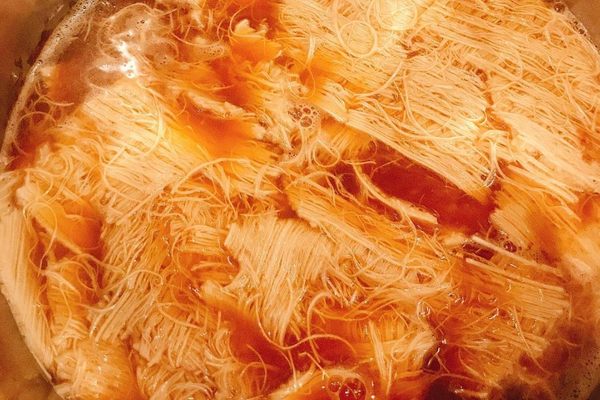You might not expect something that goes by names such as “vomit fruit,” “dog dumpling,” and “starvation fruit” to be popular. However, noni is so widespread that the fresh fruit is consumed across the globe. Supplements made from noni are estimated to bring in millions of dollars annually. Not bad for a fruit that tastes like rotten cheese.
Diners consume noni at three stages of ripeness. In Mexico, for instance, you may find roadside vendors blending unripe noni into their juices. At this stage, the fruit’s flavor is the most tolerable: spicy and grassy, with hints of horseradish and parmesan.
The fruit is most commonly consumed when fully ripe. At this stage, the outside turns white and feels soft and smooth, while the flavor develops into a combination of sharp cheese, lemon, and vomit. The few who consume overripe noni heavily dilute it. The brown, fermented fruit is too foul to consume on its own.
The main reason people opt to eat a fruit so off-putting is its purported health benefits. All parts of the plant are used to treat ailments as diverse as toothaches, cancer, attention deficit disorder, bruises, and addiction. It also plays a role in traditional ceremonies: Polynesian shamans will use the fruit to ward off evil spirits since it smells so bad that even ghosts give it a wide berth.
Studies have shown evidence of noni reducing inflammation and tumors in mice, but the majority of the health claims are unproven. With that being the case, it may be a better choice to live with a toothache, or an evil spirit, than to subject yourself to this fruit.
Written By
 Jared Rydelek
Jared Rydelek














